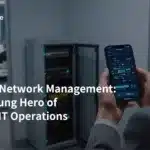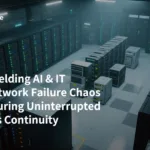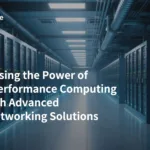The Asia-Pacific (APAC) region is a global hub for economic growth, technological innovation, and interconnected industries. However, its rapid digitalization has also made it a prime target for cybercriminals and nation-state actors. In recent months, the APAC region has witnessed an alarming rise in high-profile cyberattacks targeting critical infrastructure and large enterprises.
Notable Cybersecurity Events in APAC
Volt Typhoon's Attack on Singtel (Singapore)
In June 2024, Singapore Telecommunications (Singtel), one of Asia’s largest telecom operators, detected and mitigated a sophisticated cyberattack linked to the Chinese state-sponsored group Volt Typhoon. The attack exploited vulnerabilities in Singtel’s systems to deploy malware aimed at espionage and data theft.
What made this incident particularly concerning was the methodical targeting of a critical telecommunications provider, an essential pillar of national security and public communication infrastructure. The attack revealed vulnerabilities in supply chain security, where third-party software was exploited to gain access to sensitive systems.
Australia's Critical Infrastructure Under Siege
A recent report by the Australian Cyber Security Center highlighted that over 11% of cyber incidents in the past year targeted critical infrastructure. These included sectors such as electricity, gas, water, education, and transportation. In one instance, attackers successfully exploited vulnerabilities in public-facing IT interfaces to gain access to core systems.
The consequences of these attacks extended beyond financial losses. They disrupted essential services and, in some cases, compromised the safety of citizens relying on utilities and public transport.
Healthcare Systems Targeted in Malaysia and Indonesia
Healthcare institutions across Malaysia and Indonesia have also come under attack, with ransomware incidents on the rise. Cybercriminals have targeted hospital systems, encrypting patient data and demanding hefty ransoms for its release. These attacks not only jeopardize patient care but also erode trust in public health systems.
Cloud and SaaS Vulnerabilities
With more organizations in APAC migrating to cloud platforms, cybercriminals are exploiting misconfigured cloud services and weak identity management practices. For instance, several multinational corporations (MNCs) in the region reported breaches in their Software-as-a-Service (SaaS) platforms, where attackers accessed sensitive customer data through stolen credentials.
Lessons from the Threat Landscape
The evolving threat landscape in APAC highlights several critical issues:
- Increased Sophistication of Attacks: Advanced Persistent Threats (APTs) like Volt Typhoon demonstrate how attackers invest significant time and resources to compromise their targets.
- Targeting of Critical Infrastructure: Sectors critical to national security and daily life—telecommunications, energy, healthcare—are prime targets.
- Weak Supply Chain Security: Attackers often leverage vulnerabilities in third-party vendors to breach enterprise networks.
- Under-Prepared Enterprises: Many large enterprises still lack robust incident response plans, leaving them vulnerable to rapidly escalating threats.
The Path Forward: Resilience Through Proactive Cybersecurity
To address these threats, large enterprises and multinational corporations must take immediate and proactive steps to secure their operations:
- Adopt Zero Trust Principles: By implementing strict identity verification for all users and devices, organizations can reduce the attack surface.
- Invest in Threat Intelligence: Real-time insights into the latest cyber threats can help enterprises anticipate and mitigate attacks.
- Regular Security Audits and Penetration Testing: Enterprises should continuously evaluate their vulnerabilities and test their defenses against simulated attacks.
- Secure Supply Chains: Organizations must vet their third-party vendors and enforce strict security protocols throughout the supply chain.
- Incident Response Preparedness: A well-documented and regularly tested incident response plan is crucial for minimizing damage during a cyberattack.
Collaborating with ByteBridge for Strategic Security
While enterprises can take significant steps internally, the complexity and sophistication of today’s cyber threats often require external expertise. This is where partnering with managed security service providers like ByteBridge can make a critical difference. ByteBridge offers cutting-edge solutions such as:
- 24/7 Security Operations Center (SOC) for real-time threat detection and response.
- Proactive Threat Hunting to identify and neutralize potential vulnerabilities.
- Incident Response Services to ensure rapid recovery from breaches.
Conclusion
The recent surge in cyberattacks across the APAC region serves as a stark reminder of the vulnerabilities inherent in an increasingly digital world. Large enterprises and MNCs must not only fortify their defenses but also adopt a mindset of continuous vigilance and resilience.
By combining internal cybersecurity best practices with expert guidance from providers like ByteBridge, organizations can navigate the complex threat landscape with confidence. The time to act is now—because in cybersecurity, the cost of inaction is far too great.
About The Author
Vijei Barthi Muthusamy
Vijei Barthi Muthusamy is a Pre-Sales Engineer with a robust background in system administration, IT solution design, and technical support. Specializing in crafting tailored IT solutions that align with diverse business needs, Vijei brings extensive expertise in managing cloud infrastructures, network security, and platforms such as Linux, Microsoft Azure, and AWS. With a master’s degree in information technology, Vijei is passionate about leveraging technology to create innovative solutions that drive success and growth.
Read more
Strengthening Digital Defenses: ByteBridge IT Security Solutions
Boost Your Cybersecurity: The Game-Changing Benefits of a Managed Security Service Provider
Why Small Businesses Are Big Targets for Cybercriminals: What You Need to Know
Cybersecurity Predictions for 2025: ByteBridge’s Take on the Future
Phishing Attacks in Singapore: A Growing Cybersecurity Threat and How Enterprises Can Mitigate It







